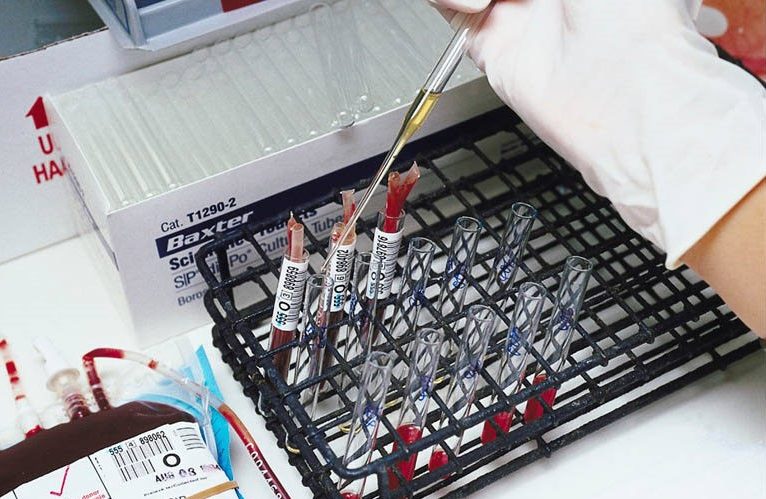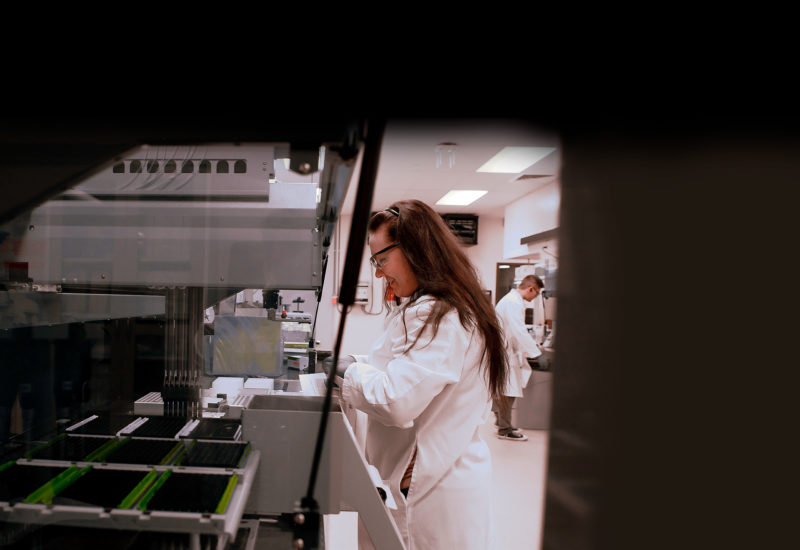A drug’s distribution between plasma and red blood cells can provide important pieces to understanding whole body pharmacokinetics. At least 99% of the total cellular space in human blood is made up of red blood cells (RBCs), and some drugs have a tendency to bind to RBCs or become sequestered through passive diffusion into the cells. As part of our comprehensive ADME service offerings, we offer an in vitro red blood cell partitioning study to determine your drug’s blood to plasma ratio.

Red Blood Cell (RBC) Partitioning Study
You can now request quotes for our research services on BioIVT.com!
Whether you need a single assay or a complete ADME program, BioIVT’s experts will help design and implement the appropriate studies for your drug and research objectives. View BioIVT’s comprehensive portfolio of ADME research services.
A blood to plasma ratio is determined by measuring drug concentration in whole blood and the drug concentration in plasma. Certain compounds are preferentially sequestered into red blood cells and therefore have a blood to plasma ratio that is greater than 1. Consider chloroquine as an example, which has a high potential for binding to RBCs. Its blood to plasma ratio is higher than 2:1[1]. However, other compounds (e.g., metoprolol) do not sequester into red blood cells, resulting in a blood to plasma ratio of approximately 1:1[2].
Pharmacokinetic (PK) parameters are usually determined by measuring drug concentration in plasma (instead of whole blood) at successive time points. However, the assumption that the concentration in plasma is representative of the concentration in whole blood, that the blood to plasma ratio is 1:1, would be inaccurate if some fraction of the drug is bound to RBCs. If a drug is significantly bound, pharmacokinetic parameters determined using only plasma may be misleading, which may lead to misinterpretation of pharmacokinetic data and overestimation of clearance.
If differential binding to erythrocytes may be characteristic of your drug candidate, it can be very important to experimentally determine the actual blood to plasma distribution ratio of your drug to achieve higher accuracy and understanding of your pharmacokinetics assessments. Red blood cell partitioning (“Rb” value) can be included in some calculations to improve in vitro prediction of in vivo drug distribution and drug-drug interactions.
In this assay, we can determine the ability of a test compound to preferentially sequester into red blood cells by measuring the amount of test compound in whole blood and isolated plasma and determine the whole blood/plasma ratio (r) in various species of animals or human.

In Vitro Red Blood Cell Partitioning
The extent of red blood cell partitioning can be quantified by the whole blood to plasma ratio. To determine the whole blood to plasma ratio, we offer an assay in which whole blood is treated with compound and then undergoes centrifugation. We then determine the amount of a test article in the plasma compared to its amount in whole blood.
At XenoTech, we can evaluate blood from any of the following species in this assay:
- Human
- Rat
- Mouse
- Dog
- Monkey
Additional species are available for in vitro RBC partitioning studies carried out through our partners:
- Rabbit
- Miniature Pig
Standard Assay Design
Our standard study includes pooled whole blood from three human donors (mixed gender) and three animals of the chosen species (male). To evaluate red blood cell partitioning, the test compound (typically at three concentrations) will be incubated in whole blood at 37 ± 2°C for a period of time (e.g., 60 min). At the end of the incubation time, plasma will be separated from whole blood by centrifugation and the extent of red blood cell partitioning will be determined in triplicate by analyzing plasma and blood samples for the presence of test article.
Instrumentation & Deliverables
An LC-MS/MS method will be developed for the test article to analyze whole blood and isolated plasma and the amount of unchanged test article in the samples will be estimated based on the analyte/ internal standard peak-area ratio.
Deliverables from this study include:
- Stability (%)
- Distribution to red blood cells (%)
- Blood to plasma ratio
In Vivo Red Blood Cell Partitioning
Additionally, radiolabeled compounds can be evaluated in an in vivo red blood cell partitioning study. Our specialized facilities and capabilities enable RBC partitioning evaluation using whole blood from treated animals.
Our partner network provides plenty of options for animal studies with more than 50 years of experience in radiolabeling and animal ADME, and accommodating the following route of administration options, radioisotope labels for ‘hot’ compounds, and animal species:
| ROUTES OF ADMINISTRATION | RADIONUCLIDES | ANIMAL SPECIES |
|---|---|---|
| Oral Intravenous (administration or infusion) Percutaneous Subcutaneous Intramuscular Intracheal Opthalmic Colorectal Intraduodenal Nasal Intraocular Sublingual Intrauterine Intracerebral Intravesical Knee Joint |
14C 3H 125I 33P 35S 51Cr 111In 55,59Fe 65Zn 75Se 90Y 153Gd |
Rats Mouse (including chimeric with humanized liver) Rabbit Dog Monkey Miniature pig Animal models of human disease (knockout models) |
PMDA-Certified GLP Compliance for Bioanalysis
Studies conducted at the Drug Development Solutions Center, our partner in Japan, meet or exceed standards required by regulatory authorities, including FDA and EMA, just as with our Kansas City campus. While in the United States, there is no method by which an institution can claim certified compliance with Good Laboratory Practice (GLP) standards, the PMDA can grant certification following an inspection that approves a Japanese facility as GLP-compliant in specific practices. The Drug Development Solutions Center has this certification for all bioanalytical services, a critical component of many animal studies. The Center is also certified by AAALAC International for ethical use of animals in research so you can be sure services exceed quality standards required by the FDA upon IND or NDA submission.
Related Services:
Definitive Study: In Vitro Plasma Protein Binding (PPB)
In vitro Plasma Protein Binding (PPB) studies are also available to determine free drug concentration in plasma. Multiple methods are available at XenoTech and our partners at the Drug Development Solutions Center. Understanding the amount of protein binding is critical to developing the drug metabolism and pharmacokinetics (DMPK) profile of a xenobiotic as well as potential for drug-drug interactions (DDI). Fraction of unbound drug (fu) is an input for many risk calculations and models, representing the percentage of drug compound not bound to plasma proteins. Our definitive study is designed to meet regulatory expectations and provide critical data for accurate risk assessment.
References
[1] Hinderling PH. Red blood cells: a neglected compartment in pharmacokinetics and pharmacodynamics. Pharmacol Rev. 1997 Sep;49(3):279-95. Erratum in: Pharmacol Rev 2000 Sep;52(3):473. PMID: 9311024.
[2] Berry LM, Li C, and Zhao Z (2011) Species differences in distribution and prediction of human V(ss) from preclinical data. Drug Metab Dispos 39:2103-2116.

